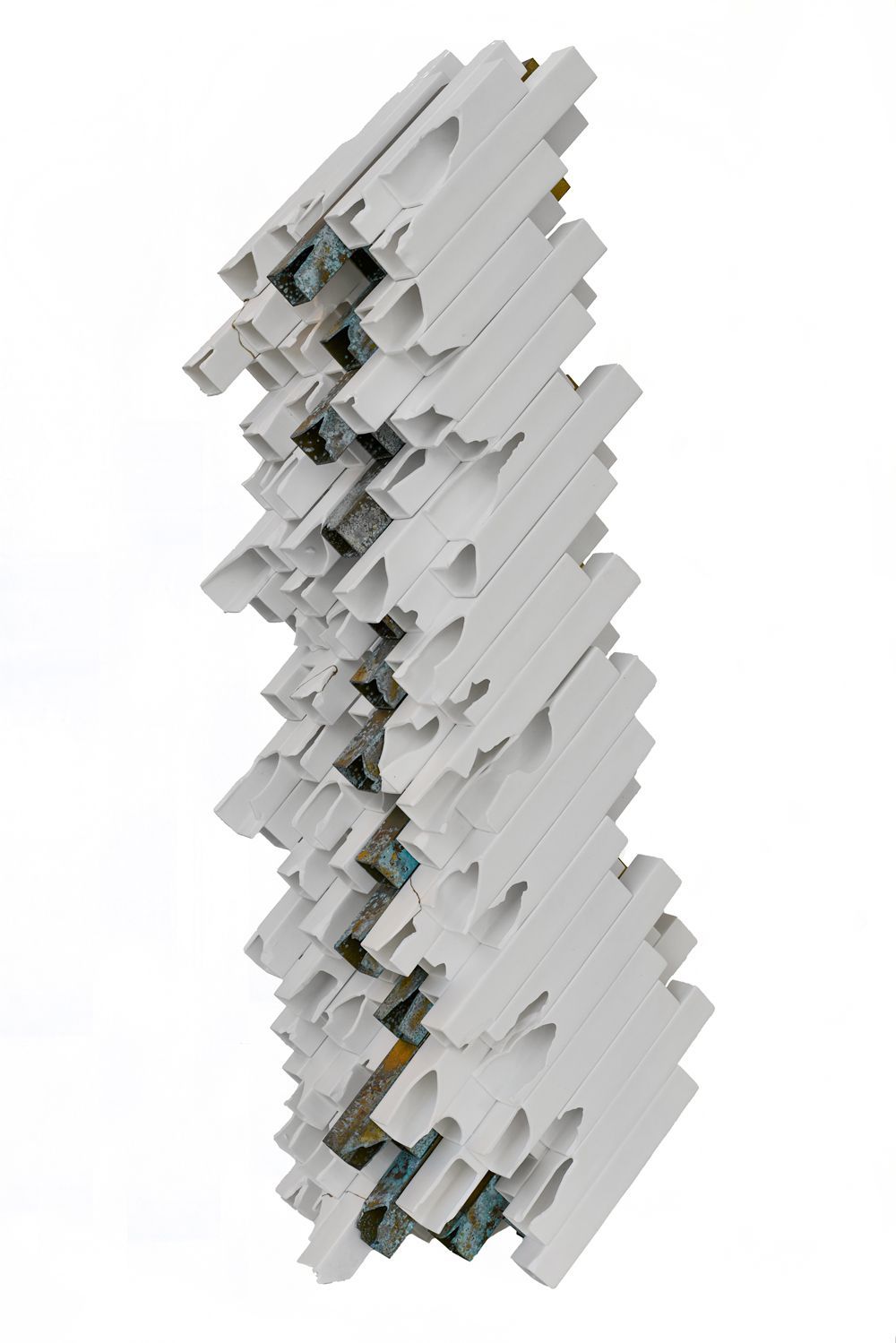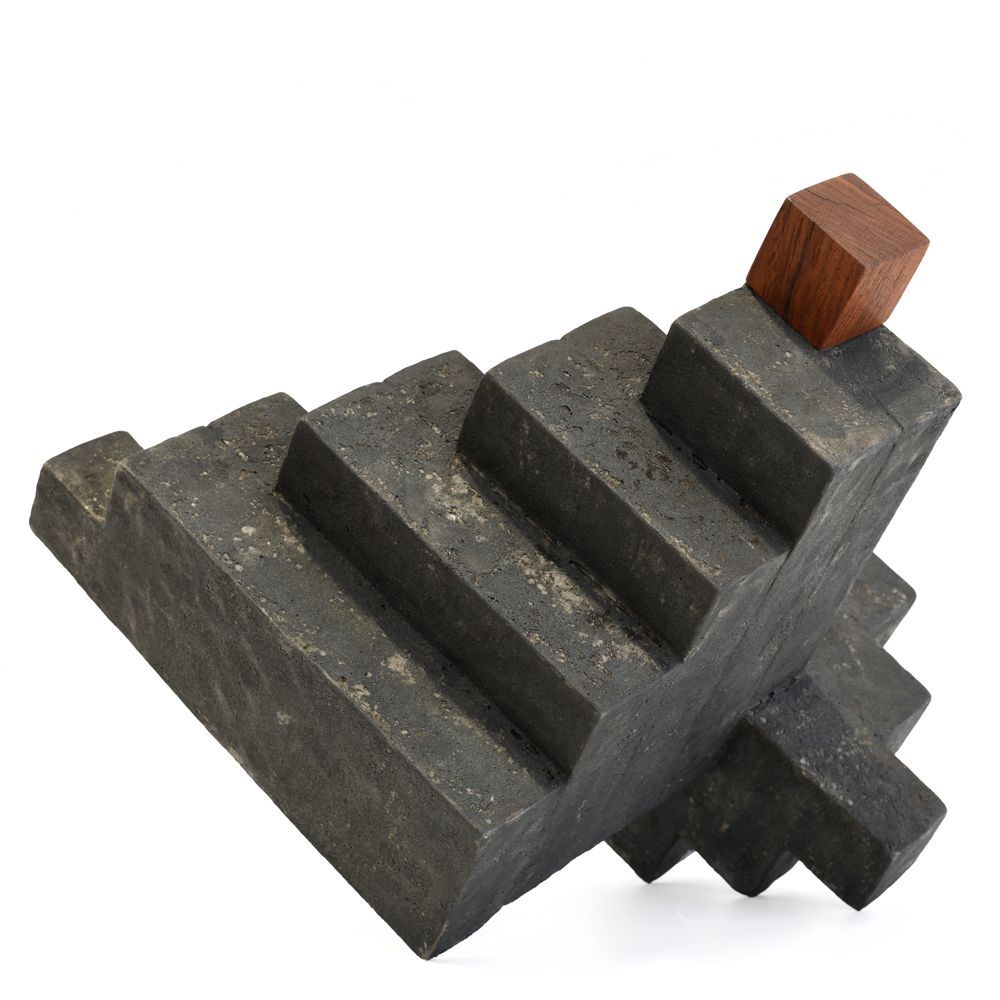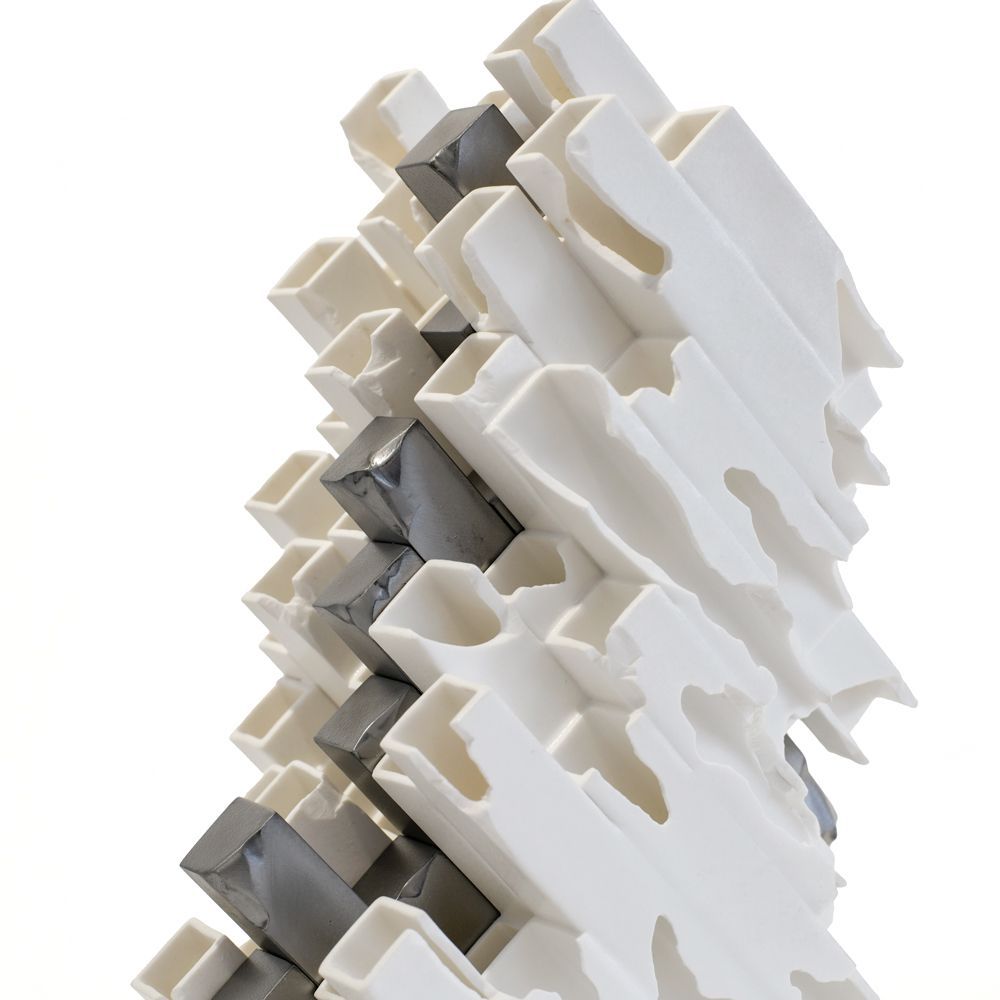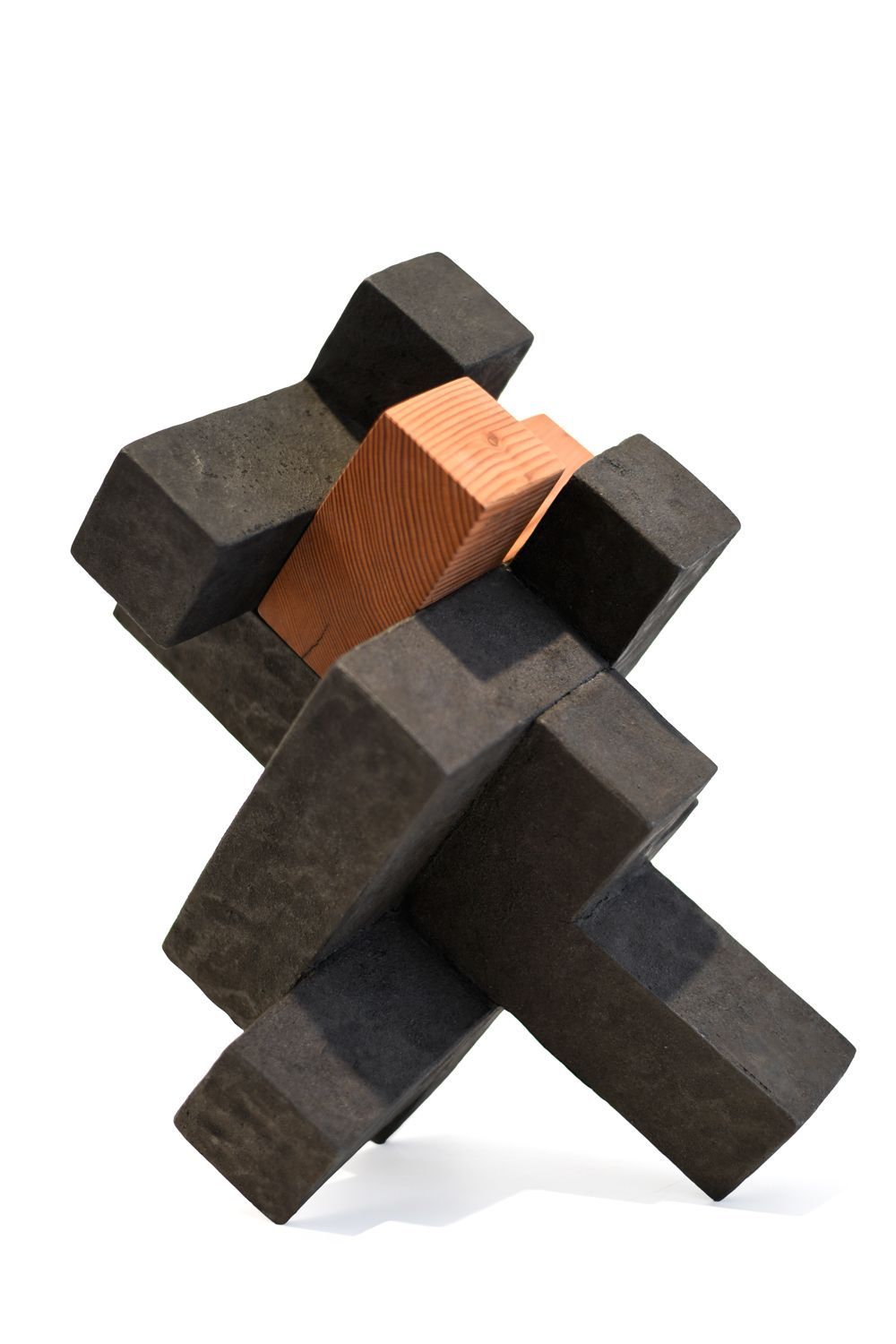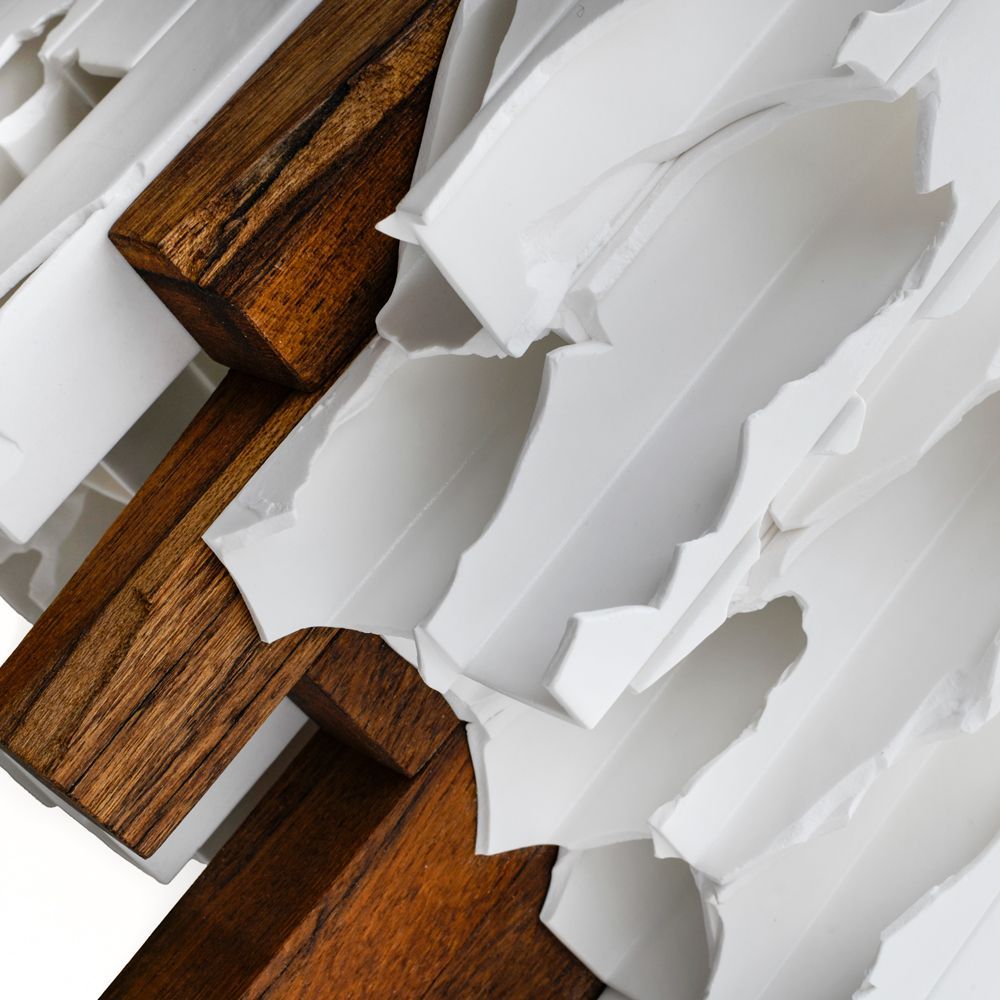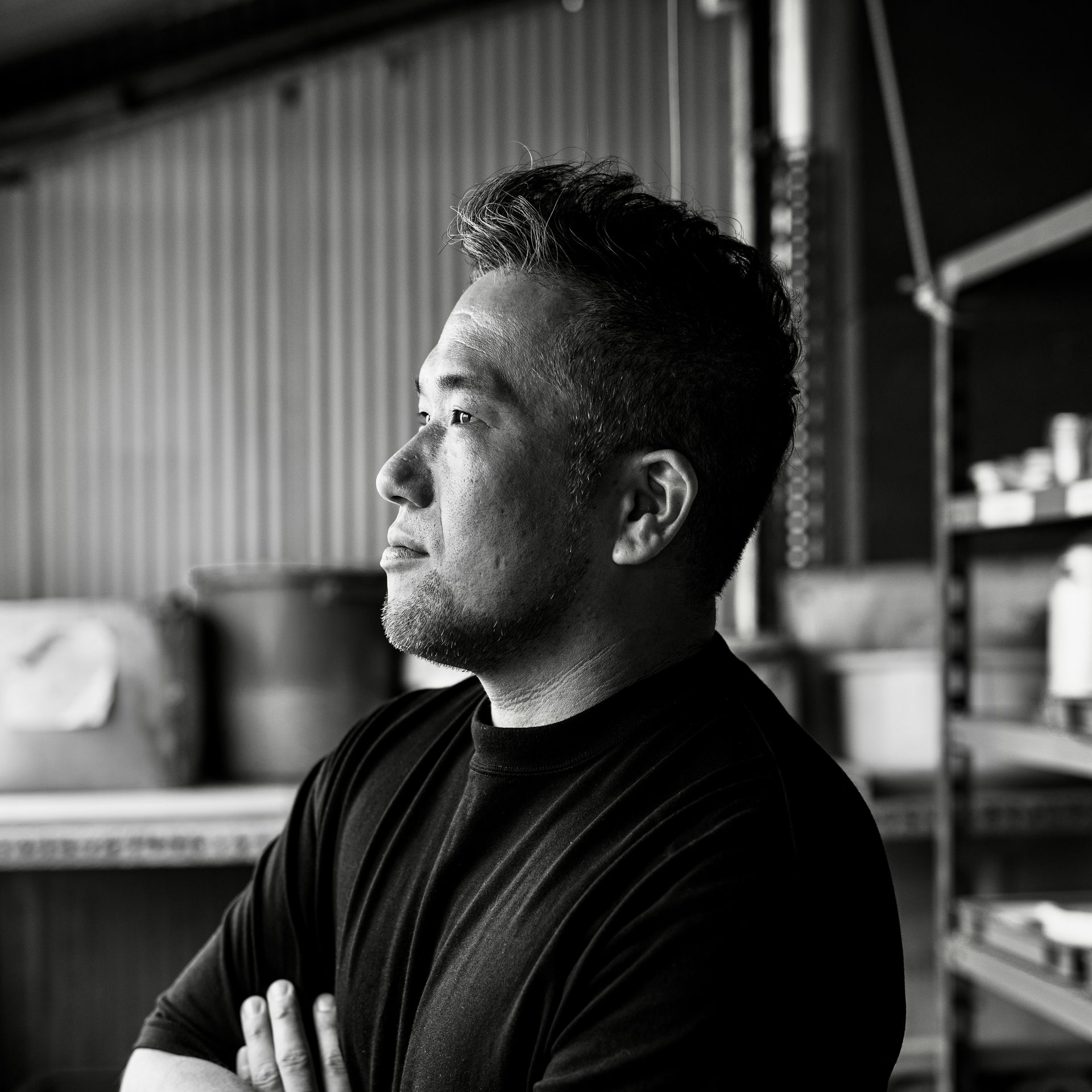Kouzo Takeuchi
Kouzo Takeuchi was born in Hyogo Prefecture in 1977. In 2001, he graduated from the Osaka University of Arts, majoring in ceramics and then studied at the Tajimi City Pottery Design and Technical Center in Gifu.
Kouzo’s fascination with geometric forms, especially aggregate ones, began in childhood and developed into artistic expression during his formal education. Images of ancient ruins in South America inspired him to the extent that he wanted express the distinctive atmosphere of decaying buildings in his work. Kouzo then began to create ceramic sculptures using square, rectangular tubes. However, the turning point in his creative process occurred in 2005, when he dropped a piece while experimenting, which caused damage to the piece. But instead of seeing it as destroyed, he found refined beauty in the fractured surface and sharp cross-section. It led to the birth of the Modern Remains series, characterised by its intentional destruction and emphasis on "controlled chaos."
Kouzo uses destruction as part of the creative process. He finds the balance between original forms and their deterioration and explores the passage of time and the fragile nature of human achievement. His ceramic sculptures echo the inevitable decline of civilisations, evoking the enigmatic beauty of ancient ruins and the natural cycle of expansion and decay. Takeuchi doesn't see destruction as an end, but as a process that reveals hidden meaning and renewal within what is broken. The ruins often provoke nostalgia; however Kouzo’s work goes beyond this emotional response. He achieves a delicate balance between contemporary presence and the vestiges of the past, creating a timeless beauty. His works lead to ask ourselves if those fragments are ruins from the past or images of an uncertain future. Kouzo’s sculptures reveal that even in decay, life, and beauty remain, reminding us that even when things are broken, they can still be beautiful and powerful.
By using fractures in his creative process, he redefines the boundaries of ceramic art, which values excellence and considers broken pieces to be failures. For Kouzo, imperfections are not seen as a mistake but as a source of transformation, a new aesthetic in which beauty emerges from destruction. While his early works mostly used white porcelain, his practice has evolved to incorporate materials like glass, wood, metal, stone, and lacquer. This allows him to explore contrasts, fragility and strength, opacity and transparency. It reflects his interest in the properties of materials and the relationships they create when combined.
Despite his philosophical research and experimentation, Kouzo remains attached to a simple but profound principle: he creates only what he finds beautiful. The emotional power of that first damaged piece continues to inspire him, a reminder that, at times, being damaged can be more beautiful than being intact.
Due to their innovative nature, Kouzo’s ceramic works have gained attention at exhibitions both in Japan and abroad. Today, his works are part of renowned collections, including the Museum of Fine Art in Boston, the Victoria and Albert Museum in London, the Cernuschi museum in Paris and the Ibaraki Ceramic Art Museum in Japan.

